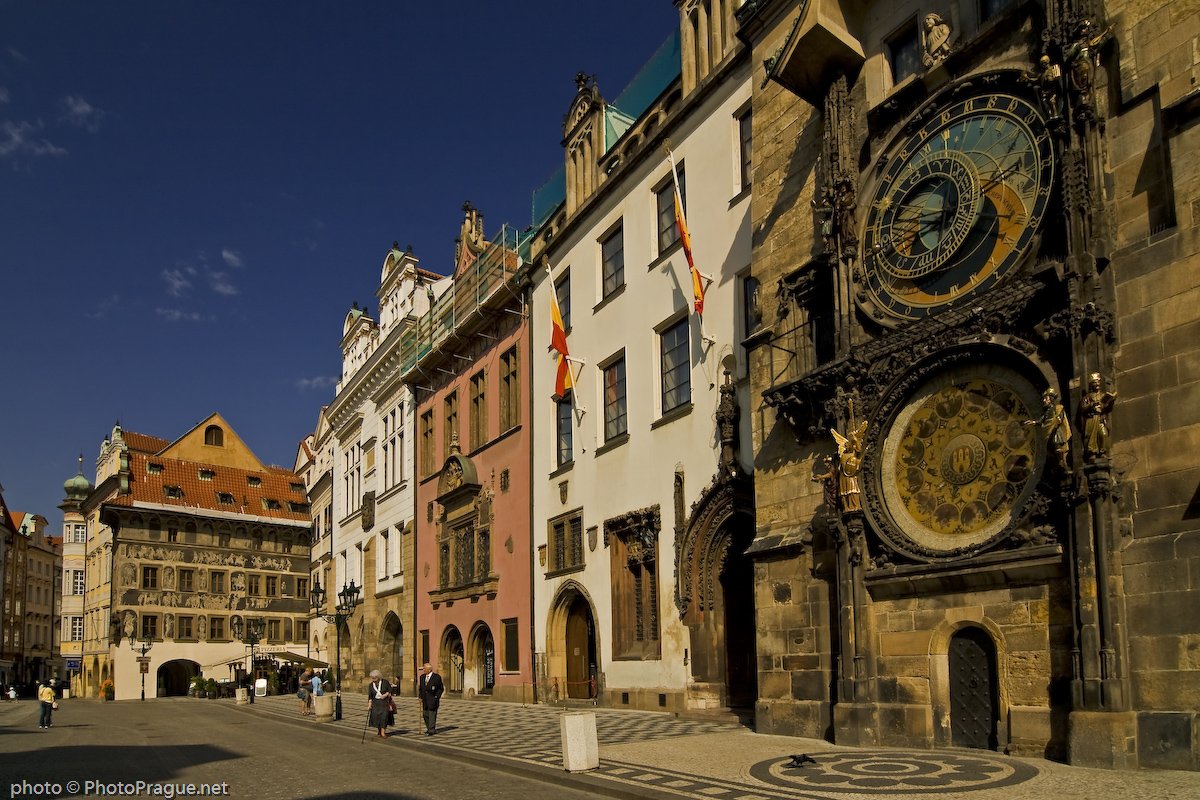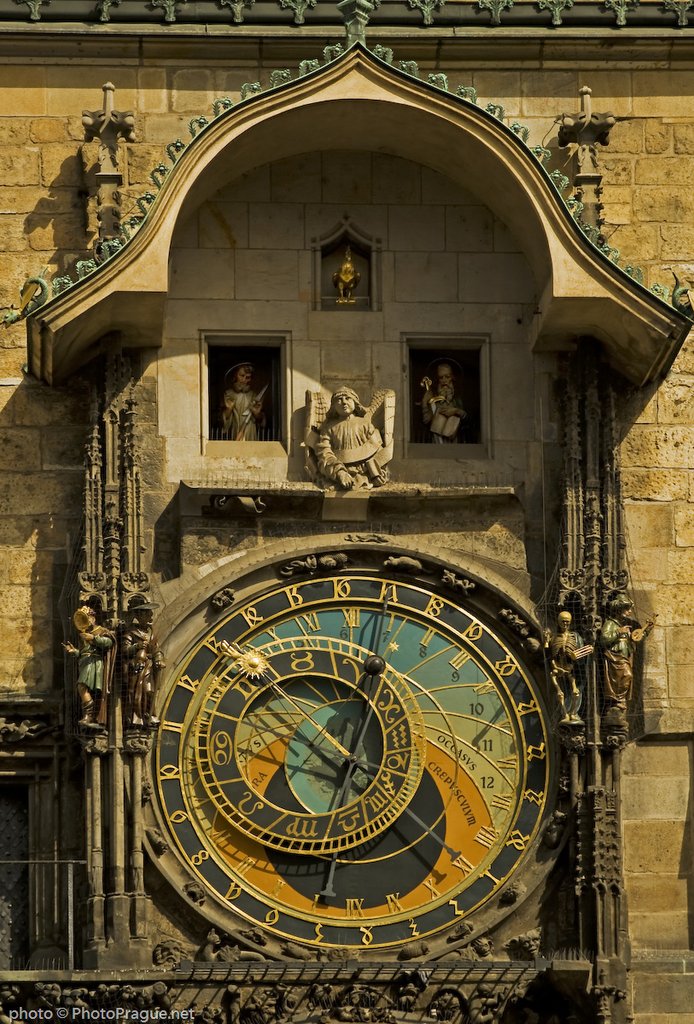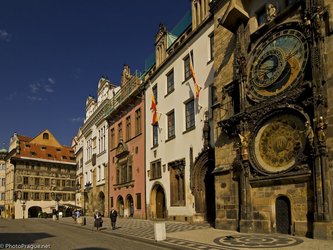The Old Town Astronomical Clock was built in 1410 and is among the oldest instruments of its kind in Europe. Despite the complicated historical peripaetie, the clock has survived as testimony to the remarkable technological ingenuity of the Middle Ages and remains an outstanding work of art, stacked with the advances from medieval times through to the 20th century. The purpose of the astronomical clock was to measure time and to show the position of celestial bodies within the Ptolemaic Solar System, in which it is remarkable that the sun is not the centre of the composition, but Earth. The system of dials captures the sunrise and sunset, lunar motions, the approximate calendar time, and the position of the sun in the zodiac.
At the point when the clock chimes, figures of the apostles appear in windows above the dials, always at the full hour. The counterbalance of the hope that the presence of the saints evoke are the figures on the sides of the clock: the rich man shaking his moneybag, the vain man admiring himself in the mirror, or the frivolous figure of the skeleton who is shaking the clock during the stroll of the apostles, reminding us of the temporary nature and vanity of all human endeavour. In the lower row of side sculptures, we find the figure of the philosopher examining the mystery of the world, the astronomer studying the infinite sky, and the chronicler who tries to defy the passage of time by recording everything that happens into his diary. Aside from the secular figures, we also find the monumental statue of the Archangel Michael, who is again the source of hope and faith. The stone-sculpture decoration of the Orloj began mostly in the 15th century. The beautiful calendar slab is the work of Joseph Mánes and is from 1865. The figures of the Apostles had to be redone in May 1945, after a fire of the Old Town Hall.










